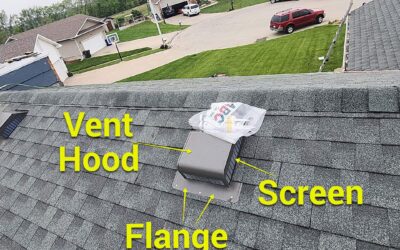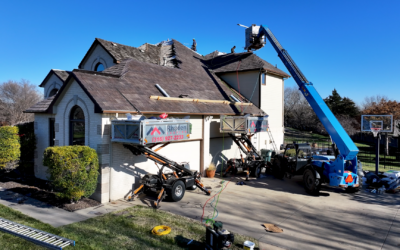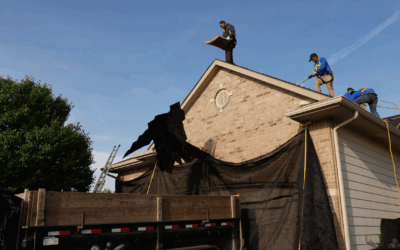Roof Coursing: What It Is and Why It’s Important
In roofing, coursing refers to the horizontal rows of materials,like shingles,that make up the surface of your roof. Each row is called a course, and the way these rows are arranged impacts more than just how the roof looks. Proper coursing ensures everything is aligned neatly and helps the roof hold up against the elements with long-lasting durability.
While coursing plays a big role in your home’s curb appeal, it’s just as important for making sure your roof performs its best. A well-laid pattern helps water shed properly and gives the roof the strength it needs to withstand whatever weather comes its way over the years.
There are two common ways to arrange these rows: in straight lines or staggered patterns. Staggered coursing creates a more dynamic, traditional look with its offset design, while straight coursing delivers a sleek, uniform appearance for a clean and modern finish.
What is Straight Coursing?
Straight coursing is a roofing style where shingles are laid in perfectly aligned rows, both horizontally and vertically, creating a crisp and uniform appearance. This method gives the roof a clean, modern look that works well with contemporary and traditional home designs alike. Beyond aesthetics, straight coursing ensures proper alignment and overlap of the shingles, which helps the roof shed water efficiently and maintain its structural integrity over time. It’s an excellent choice for homeowners who prefer a sleek, orderly finish on their roof.

This stunning DaVinci roof is installed in a straight course, perfectly complementing the home’s design and giving it a clean, fresh, and modern feel.

This asphalt roof is installed with straight coursing. While simple in design, this layout gives the roof a sleek, modern look that pairs beautifully with a clean, minimalist aesthetic.
What is Staggered Coursing?
Staggered coursing is a roofing style where each row of shingles is offset from the one below, creating a more organic, textured look. This pattern adds depth and a sense of movement to the roof, making it especially popular on rustic, traditional, or craftsman-style homes. Not only does staggered coursing enhance curb appeal, but it also helps soften straight lines, making minor imperfections less noticeable over time. It’s a great option for homeowners who want a roof with character and a timeless, handcrafted feel.
Both straight and staggered coursing are equally effective at protecting your home,the difference comes down to style and personal preference. Keep in mind that not all roofing products are designed to support staggered installation, so it’s important to consult with your roofing specialist if this look is on your wish list.


Figure 1: Pictured above is a stunning DaVinci roof installed with staggered coursing. This layout adds a charming, cottage-like feel and enhances the home’s character—perfect for properties with timeless style and personality.
Figure 2: This roof features CertainTeed’s Presidential shingles, designed to mimic the look of staggered coursing while being installed in straight rows. It’s a fantastic option for homeowners who want the dimensional, textured appearance of staggered coursing with the simplicity of a straight installation.
When Can You Choose Between Straight and Staggered?
As mentioned earlier, not all roofing products are compatible with both straight and staggered patterns. It’s important to consult with your roofing specialist to choose a product that works best with the installation style you’ve decided on together.
Here is a list of options that can be either straight or staggered:
- DaVinci Single Width Shakes
- DaVinci Multi Width Shakes
- All Brava Shake Products
- Natural slate
- Real wood shake
- Some asphalt shingles give the appearance of staggered shingles
- GAF Grand Sequoia
- CertainTeed Presidential Shingles
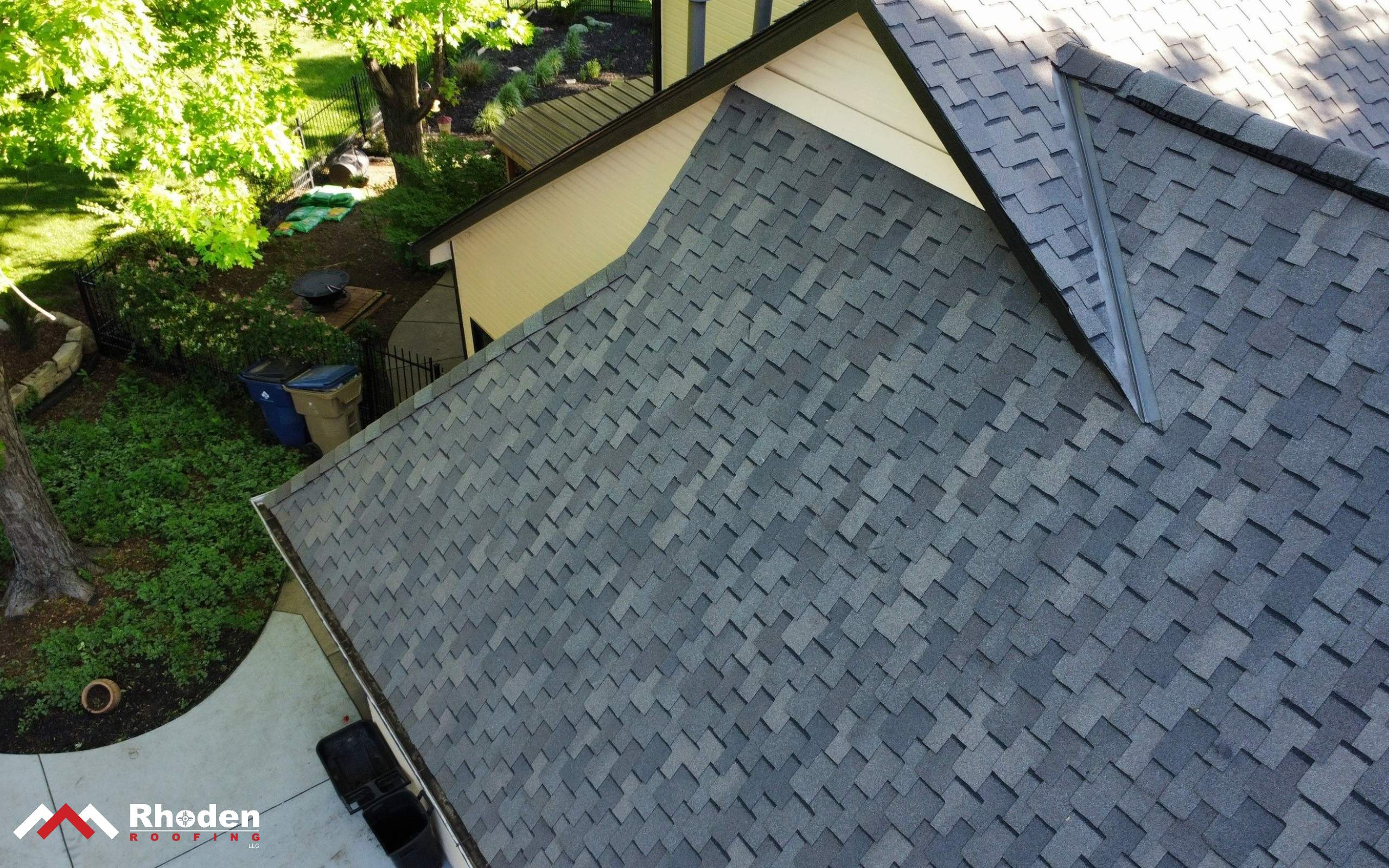
Pictured above is GAF’s Grand Sequoia line, designed to mimic the look of staggered coursing while being installed in a straight pattern. It’s a fantastic option for homeowners who love the dimensional, handcrafted appearance of staggered roofs but want a more budget-friendly alternative to synthetic materials.
Cost Considerations
Replacing a roof is a significant investment, and the final cost can vary widely depending on the materials and installation style you choose. There’s no one-size-fits-all price because each project is unique, factors like shingle type, roof pitch, and coursing style all impact the total. For example, opting for a staggered installation with DaVinci shingles typically adds around 10% more in material costs compared to a straight-course layout due to the extra product needed to create the dimensional look. Some products, like GAF’s Grand Sequoia line, are designed to mimic the appearance of staggered coursing, and they often come at a premium compared to standard straight-course shingles. Ultimately, while we can provide ballpark estimates, the best way to understand the cost of your specific project is through a tailored quote that considers all the variables of your home and preferences.
Installation Differences
The difference between straight and staggered coursing comes down to how the shingles are installed and the overall look they create. Straight coursing involves laying shingles in perfectly aligned rows, giving the roof a clean, modern appearance. It’s a straightforward installation process that requires precise measuring to keep everything uniform. Staggered coursing, on the other hand, offsets each row of shingles to create a more natural, textured pattern that adds depth and character—ideal for homes with a rustic or traditional style. This method takes a bit more planning and cutting to maintain the staggered effect, but both options are equally effective in protecting your home. Your roofing specialist can help you decide which style and product will work best for your home and design preferences.
Repairability and Longevity
While both straight and staggered roofs are designed to protect your home, there are key differences to consider in their installation, longevity, and maintenance. Staggered designs are often thought to have a slight edge in durability, with their offset pattern enhancing water runoff and helping the roof withstand the elements over time. However, this style also requires a more experienced installer to maintain a consistent, seamless pattern across the roof. The added precision and extra time spent aligning shingles and making custom cuts can lead to slightly higher labor costs compared to straight coursing. Straight roofs, with their clean and uniform layout, are quicker to install and often involve fewer unique edge treatments or flashing adjustments. They can also be easier and more cost-effective to repair down the road since the rows are predictable and straightforward to match. That said, straight coursing can still offer impressive longevity,especially when paired with premium materials like slate, clay, or standing seam metal, which are known to last for decades. Ultimately, your roof’s lifespan and performance depend not only on the layout but also on the materials you choose and the expertise of your roofing specialist.
Which Should I Choose?
When it comes down to it, both straight and staggered coursing will protect your home equally well, they serve the same purpose of shedding water and safeguarding the layers beneath. The choice is really about style and personal preference. Consider the overall look of your home: straight coursing tends to complement modern or traditional designs with its clean, uniform lines, while staggered coursing adds texture and a more rustic, handcrafted feel that pairs beautifully with cottage or craftsman-style homes. Your budget is another factor to weigh, as staggered installations can increase both material and labor costs. Ultimately, choose the option that gives you the curb appeal you’ll love coming home to every day.
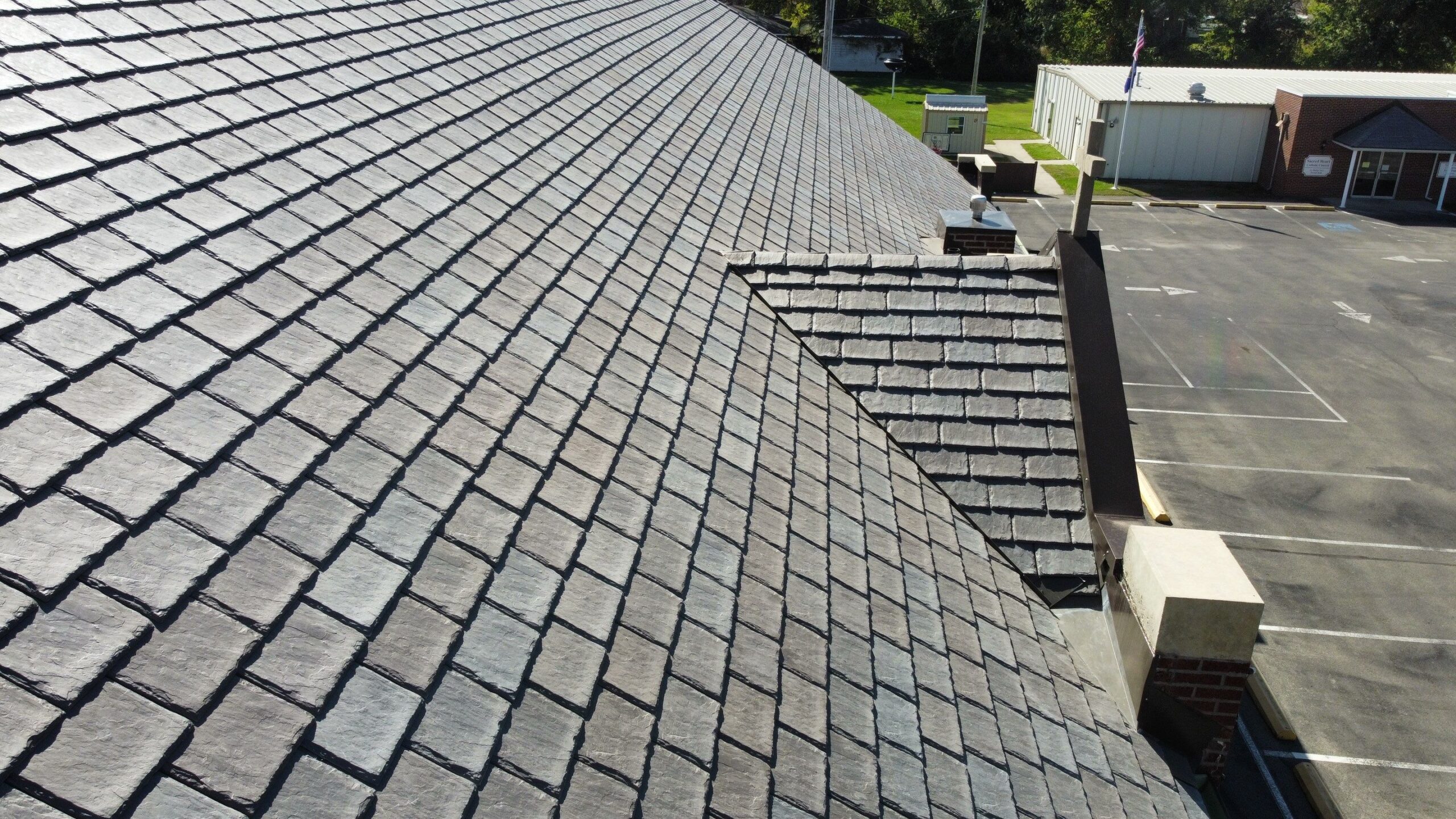
This is a beautiful example of a staggered DaVinci roof, showcasing the charm and dimension this pattern brings. Whether you choose straight or staggered coursing, you truly can’t go wrong—it all comes down to your personal style and what suits your home best.
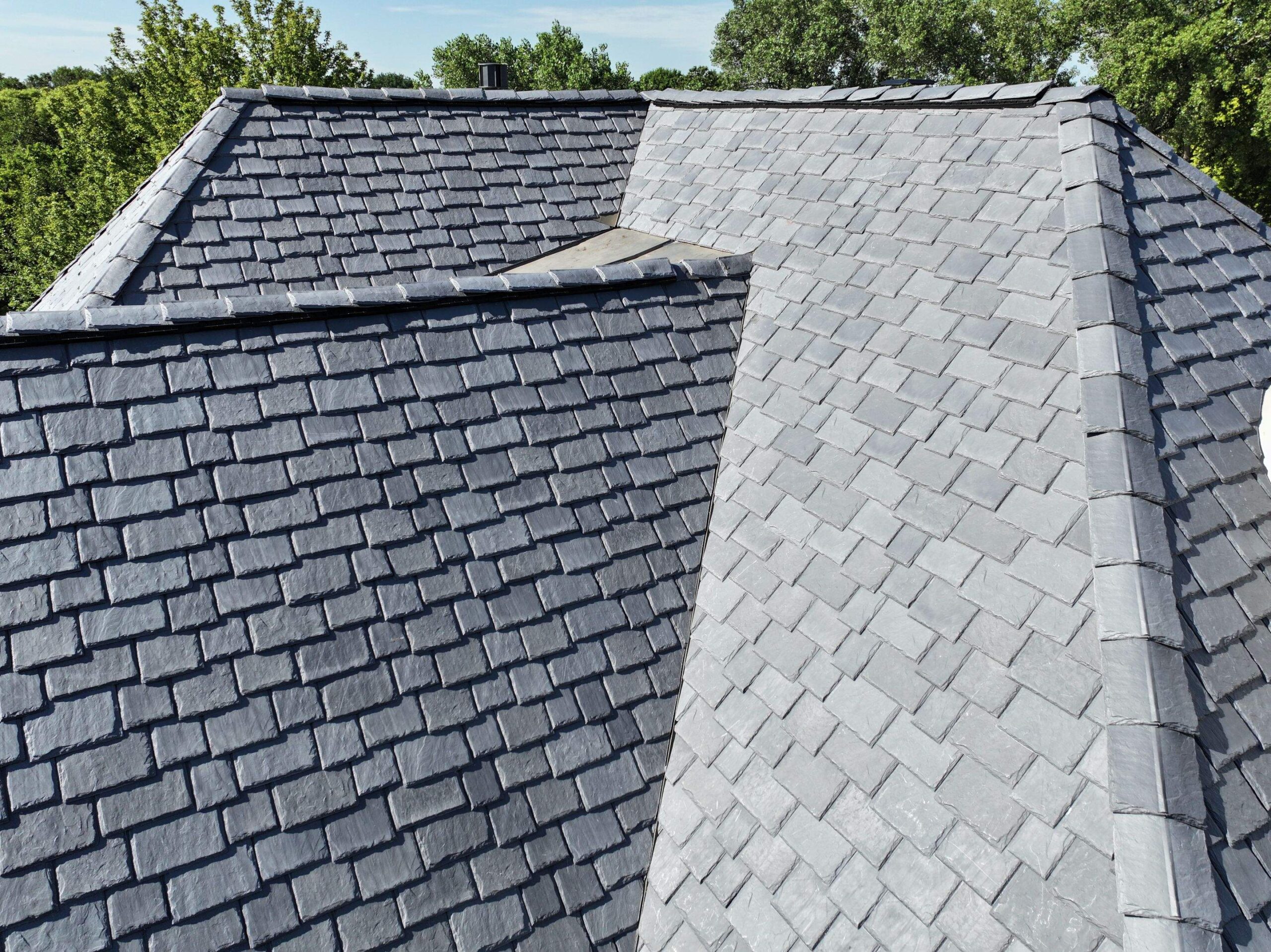

Pictured above is a stunning home featuring DaVinci’s Multi-Width Shingle. The varied widths create rich dimension and texture, adding depth and character that perfectly complement the home’s architectural style.

